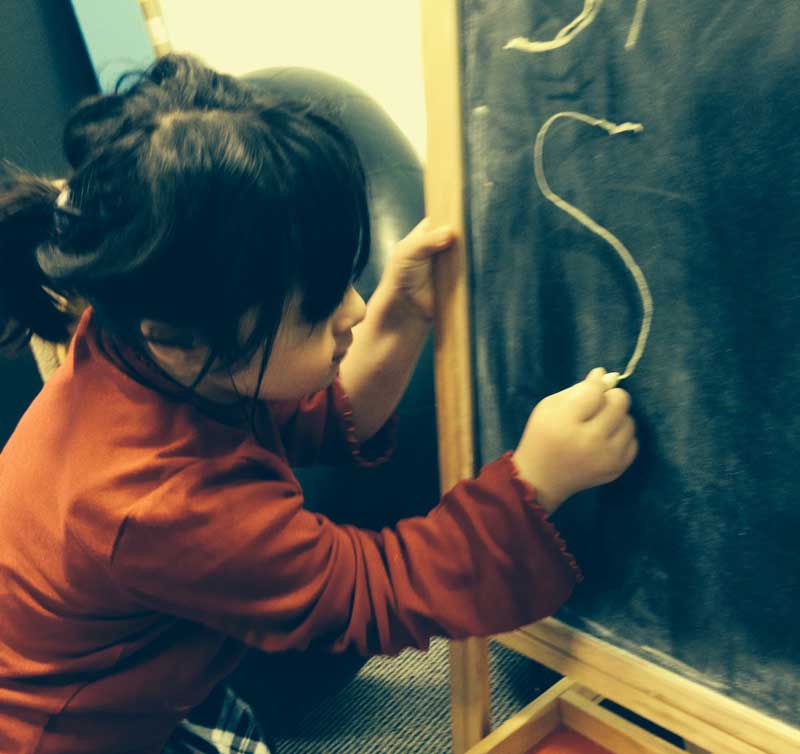Handwriting / Dysgraphia
Handwriting is an integral part of a child’s development and important for academics, communication, and many other tasks throughout their lifetime. Handwriting is a complex process, of which many of us take for granted. An individual must integrate many skills all at once to get their thoughts onto paper and do so in a legible, cohesive manner.
Some of the most common OT deficits related to handwriting include:
- postural instability
- poor bilateral integration
- visual motor and visual perceptual deficits
- decreased strength/endurance
- inefficient grasp patterns
- inattention
- cognitive processes related to self-monitoring, ideation, initiation, and recall
Some children who demonstrate struggles in handwriting may be experiencing dysgraphia. This term refers to challenges in the skills needed to produce writing and can include handwriting, typing, as well as spelling. When writing, the result is often messy and spelling errors are common, the writing speed may be slower, but this does not necessarily mean to child will have difficulties with reading or speaking.
Children experiencing dysgraphia often say it is frustrating, and this can lead to avoidance of writing tasks, emotional distress, and influences self-confidence. Dysgraphia can occur on its own or with dyslexia, which is an impaired ability to read and comprehend written words, or with other selective language impairments that cause problems with learning written and oral language skills.
Children with handwriting difficulties and/or dysgraphia can make improvements through skilled intervention. The OTs at Integration Station Pediatric Therapy Services approach handwriting concerns using a holistic approach, from the bottom-up, to determine which foundation skills require intervention to promote enhanced handwriting outcomes.

